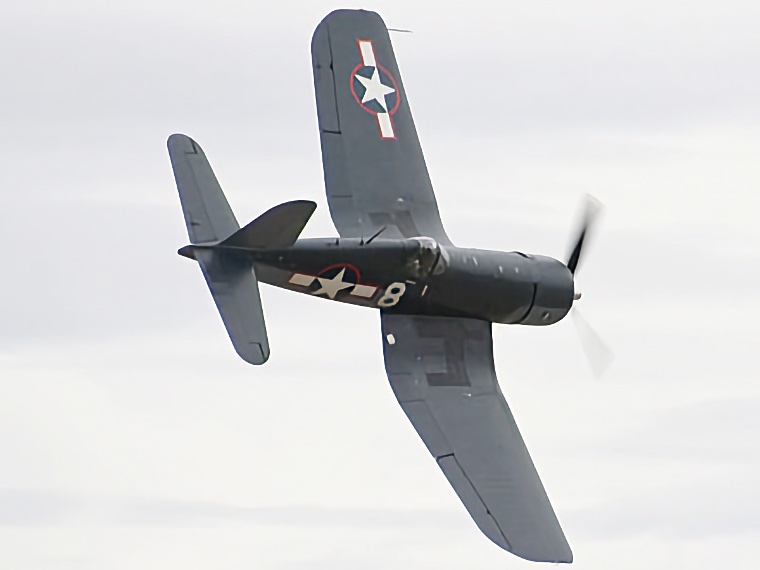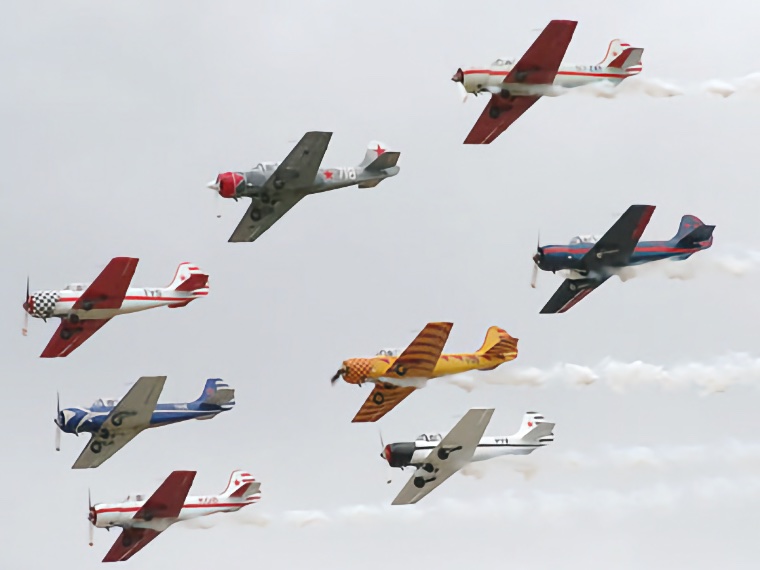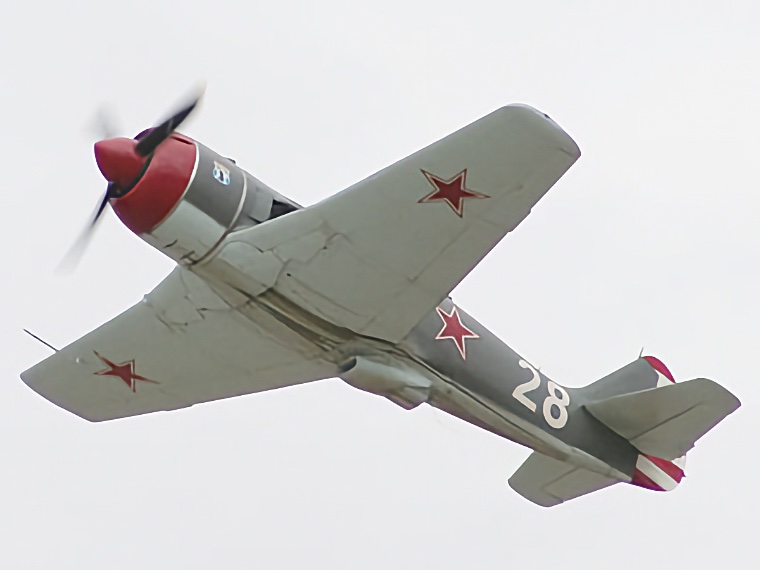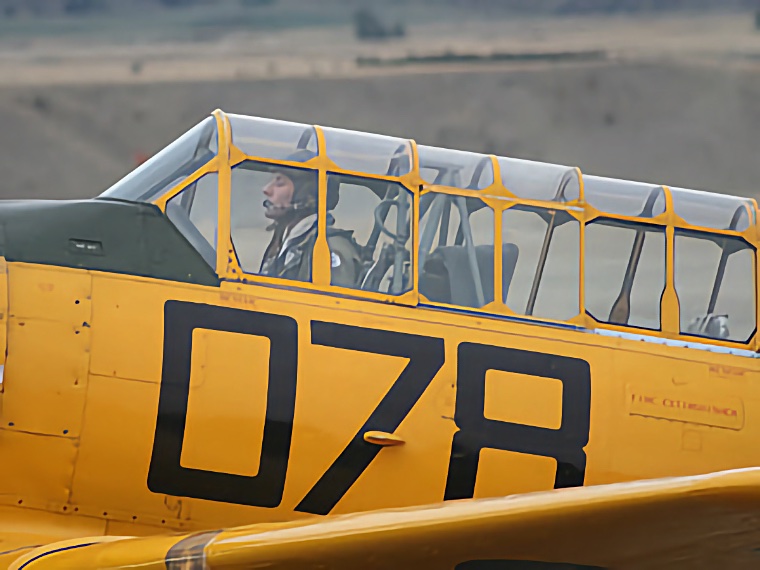
Up to OJB's Aircraft List World War II, Wanaka 2006 Aircraft of the World War II era have traditionally been the major type displayed at the show. In the past there have been Spitfires, a Hurricane, Corsairs, Mustangs, Kittyhawks, an Me 109, Yaks, Polikarpovs, and many others. The Yak 3, shown above, was the ultimate Soviet fighter of World War II. It was the lightest fighter of the war, and when it was first introduced gave the Germans real problems because the Focke-Wulf 190 and Me-109 at the time couldn't really compete with it.  The Corsair does a regular display at the show. The bent wings make it one of the easiest aircraft to recognise. They were built so that there was clearance for the huge propellor while still using the strong, short landing gear.
The Corsair is powered by a Pratt and Whitney R2800.8W Double Wasp radial engine producing 2000 hp, and has a maximum speed of 392 mph at 24,000 feet.  This photo shows a group of Yakovlev "Yak" 52s flying in formation. Like the similar Nanchang CJ6s, which were also well represented at the show, this aircraft was based on the Russian Yak 18 and is fully aerobatic. Its relatively cheap to buy, and is a popular choice as a warbird in New Zealand, and elsewhere.
There were more Yaks and Nanchangs than any other aircraft at the show this year, so their popularity is obvious.  The Lavochkin LA-9 is a rare fighter, in fact this is the only flying example in the world, and very few others exist in any condition. It was produced in Russia shortly after the end of World War II by Syemon Lavochkin and about 1600 units were built.
It has a top speed of 430 mph and a ceiling of about 35,000 feet. The engine is a Shvetsov M-82FN 14 cylinder radial producing 1850 hp. Wingspan is 32 feet, length is 28 feet, and height is approximately 8 feet.  The Harvard (known as the T-6 Texan in the US) is another popular warbird flown in New Zealand. It was used for many years as a trainer.
It can be used for aerobatics (and often is) but requires a bit of caution because its easy to run out of power half way through a maneuver. The engine produces around 600 horsepower and the aircraft itself is moderately heavy (4158 pounds empty weight).  Here's a Harvard pilot shortly after landing. The Harvard is a two seater and originated in 1935. Eventually around 17,000 were built, and many survive today (around 350 are still flying).
I enjoyed using a digital camera with a long telephoto lens (Canon EOS350D with Canon 75-300 zoom) for the first time at this show (previously I used compact digitals). It let me get in nice and close for some of the shots, as you can see here. |